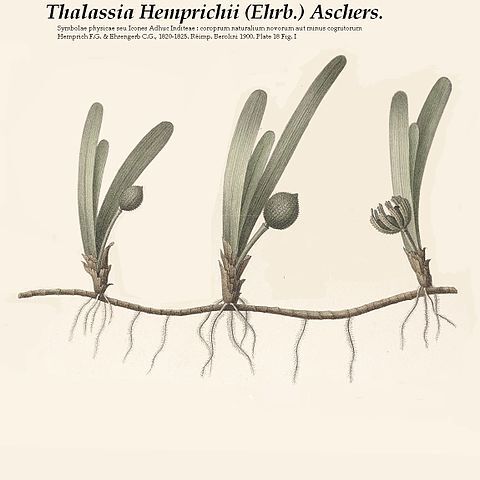Rhizome to 5 mm diam.; lateral shoot to 30 cm long, with 4–6 leaves, at every 6–8 rhizome internodes. Leaves: sheath c. 2–7 cm long; blade narrowly linear, slightly curved laterally, 10–40 cm long, 4–10 mm wide; longitudinal veins 10–17. Spathe bracts narrowly elliptic, 15–30 mm long. Male inflorescence peduncle c. 3 cm long. Male flower with pedicel 2–3 cm long; tepals 7–8 mm long, 3 mm wide, with numerous tannin cells; anthers oblong, 7–11 mm long, 1–1.25 mm wide; pollen grain chains 20–35 mm long. Female inflorescence peduncle 2–4 cm long. Female flower subsessile; hypanthium 2–3 cm long; ovary conical, 1 cm long; styles 6, 5–7 mm long; stigmas 10–15 mm long. Fruit globose, 2–3 cm diam., with a beak 2–5 mm long, coarsely hairy, splitting into 6–9 valves which bend back to release (1–) 3–9 globose-conical seeds, 6 × 6 mm.
Rhizomes terete, with persistent leaf sheaths. Leaves curved, 6-12(-40) cm × 4-8 mm. Peduncle of male inflorescence 2-3 cm, female inflorescence without peduncle; spathe linear. Male flower on a pedicel 2-3 cm; perianth segments elliptic, petaloid; anthers oblong; female flower with ovary of 6 carpels; stigmatic branches 1-1.5 cm. Fruit greenish, 2-2.5 × 1.8-3.2 cm.


